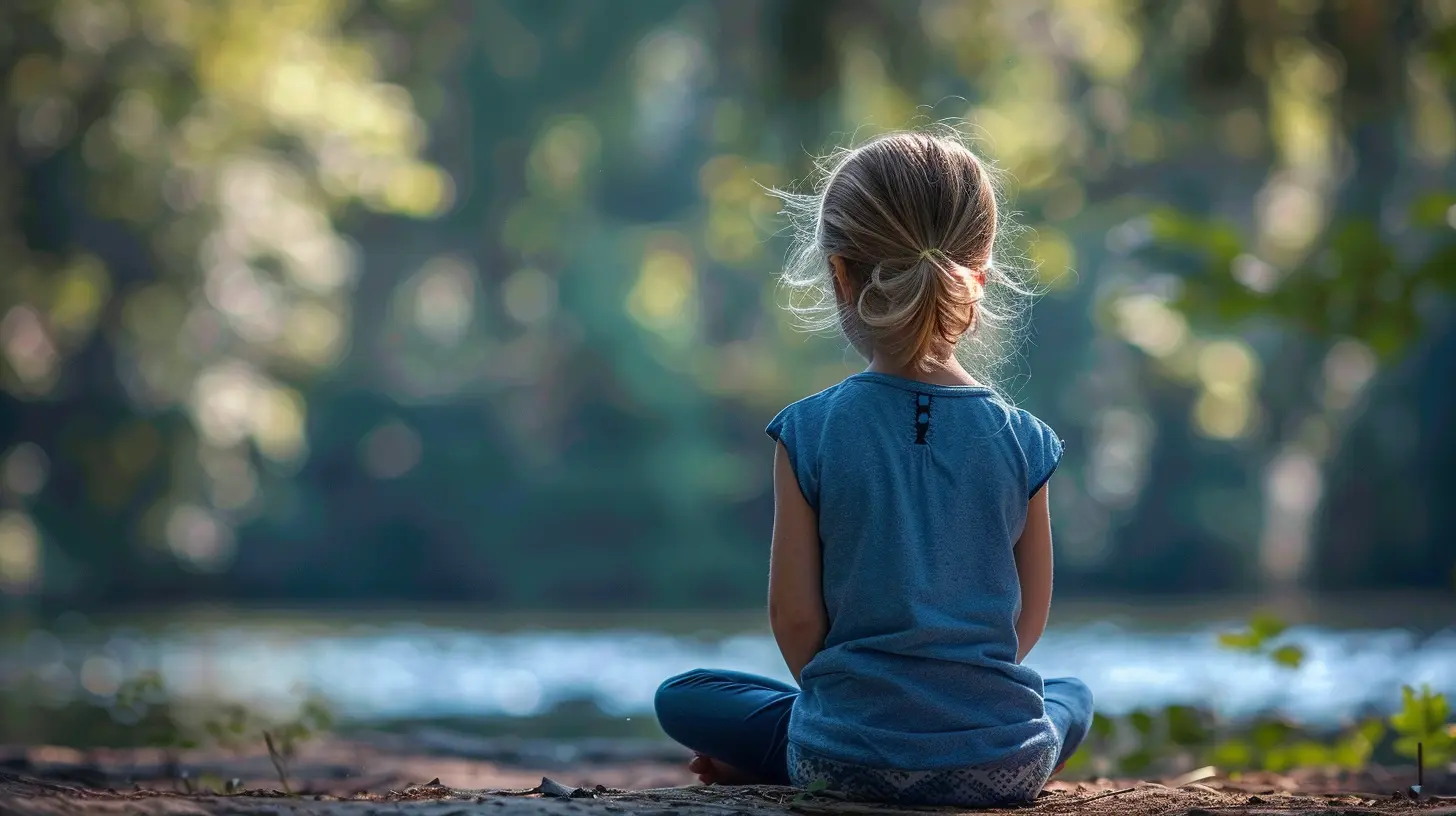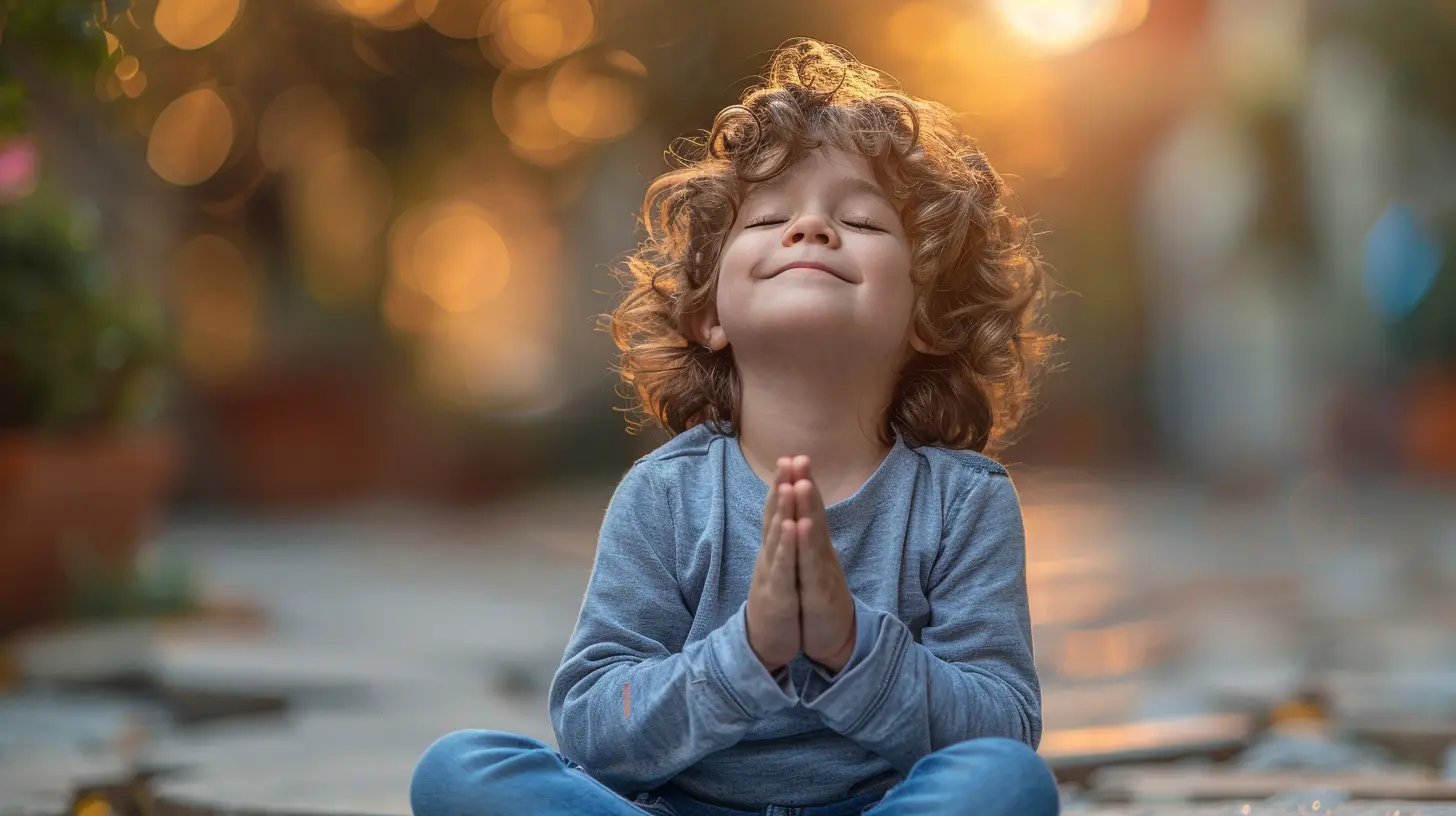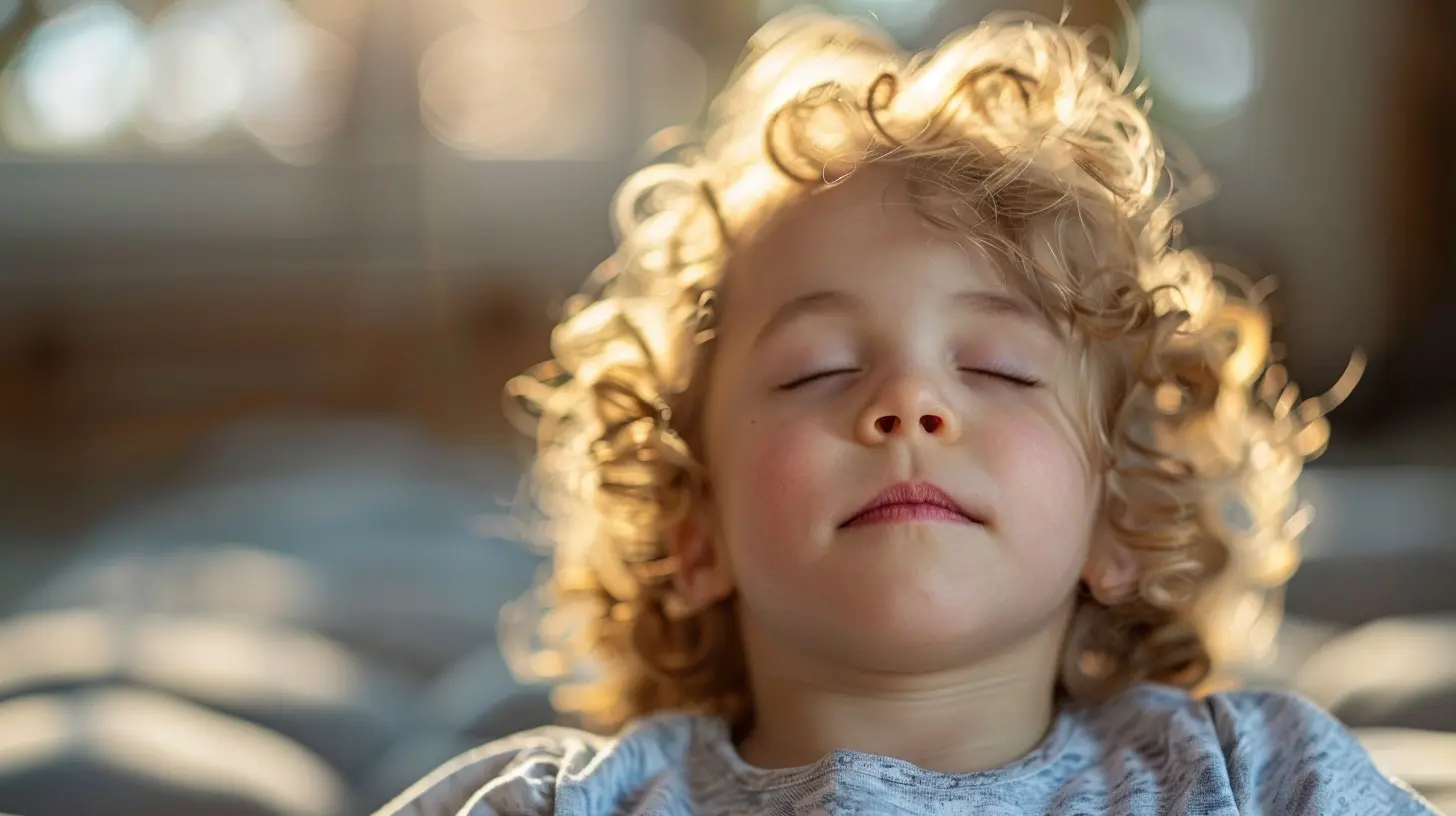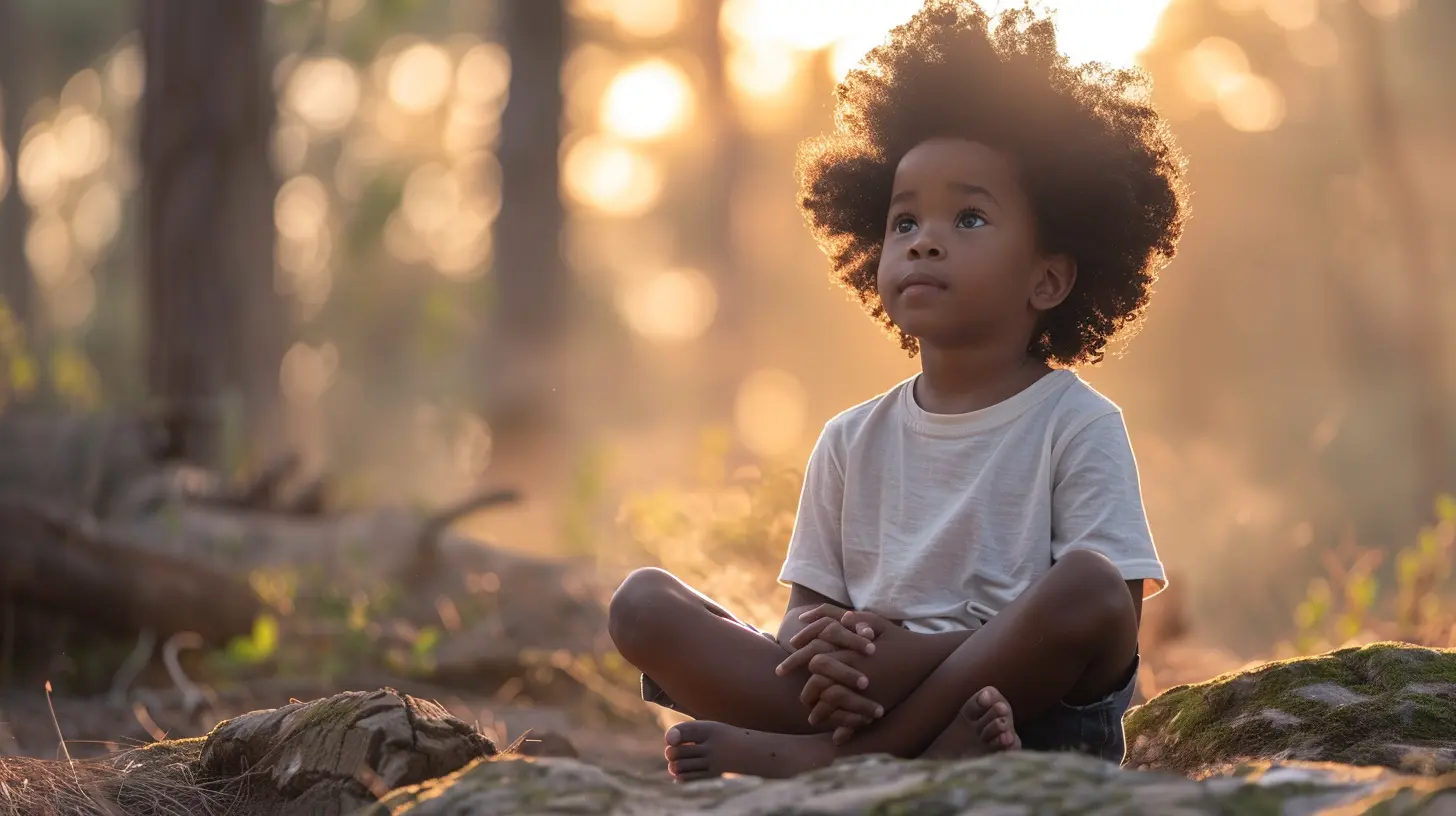Incorporating Mindfulness into Your Preschooler’s Daily Routine
7 May 2025
Parenting a preschooler is an adventure full of giggles, messes, and endless curiosity. But in a world filled with screens, schedules, and overstimulation, even our little ones can feel overwhelmed. That’s where mindfulness comes in!
Mindfulness isn’t just for adults—it’s a fantastic way to help young children develop emotional regulation, focus, and a sense of calm. And the best part? It doesn’t have to be complicated! By weaving mindfulness into your child’s day through simple activities, you can set them up with a lifelong tool for managing emotions and staying present.
Let’s dive into some fun and easy ways to incorporate mindfulness into your preschooler’s daily routine! 
What Is Mindfulness for Preschoolers?
Mindfulness is the art of paying attention to the present moment without judgment. Essentially, it’s about helping your child slow down and notice what’s happening around and within them.For preschoolers, mindfulness isn’t about sitting silently on a cushion for 30 minutes (let’s be real—they can barely sit still for two!). Instead, it’s about engaging their senses—feeling the warmth of the sun, noticing their breath, or listening to the chirping of birds.
By practicing mindfulness, little ones can:
✅ Improve their focus
✅ Manage big emotions
✅ Feel more connected to their bodies
✅ Develop kindness and empathy
Now, let’s explore how you can bring mindfulness into their everyday life in a fun and natural way! 
1. Start the Morning with a Mindful Moment
Mornings can be chaotic—brushing teeth, getting dressed, and trying to get out the door on time. Instead of rushing, try adding a simple mindful moment.👣 Barefoot Grounding: If you have a backyard or a safe spot outside, let your child step on the grass barefoot for a minute. Ask them, “What does the ground feel like under your feet?”
🌞 Sunshine Check-In: Open the curtains together and take a deep breath. Say, “What does the sunshine feel like on your face?”
Starting the day with these tiny grounding exercises can create a sense of calm before the day kicks into high gear. 
2. Use Mindful Breathing Throughout the Day
Breathing exercises work wonders for calming little minds. And the best part? You can sneak them in during different parts of the day.🦋 Butterfly Breaths: Ask your child to take a deep breath in while raising their arms like butterfly wings. As they exhale, they slowly lower their wings. This visual makes deep breathing fun!
🎂 Smell the Cake, Blow the Candles: Tell your child to imagine smelling a delicious birthday cake (inhale through the nose) and then blowing out the candles (slow exhale). It’s a simple way to teach slow, deep breathing.
These tiny breathing breaks help regulate emotions and bring some calm into the day. 
3. Mindful Eating for Snack Time
Instead of gobbling down those snacks in front of the TV, turn snack time into a mindfulness practice.🍓 Texture & Taste Check: Encourage your preschooler to notice how their food feels, tastes, and smells. “Is your strawberry smooth or bumpy? Is it sweet or sour?”
🍎 Slow Chewing Challenge: Challenge them to take slow, intentional bites, noticing how the food changes as they chew.
Mindful eating helps kids appreciate their food, tune into their bodies, and slow down their busy little minds.
4. Create a Mindfulness Jar
A mindfulness jar is a fantastic way to help kids visualize their emotions.🌀 How to Make One:
- Fill a clear jar with water.
- Add glitter glue or regular glue with a pinch of glitter.
- When shaken, the glitter swirls around like a storm—just like emotions do when we feel upset. But as the glitter settles, so do our feelings.
Whenever your child feels overwhelmed, have them shake the jar, watch the glitter settle, and take deep breaths until they feel calmer.
5. Go on a Mindful Nature Walk
Kids are natural explorers, so why not turn a regular walk into a mindfulness adventure?🍂 The “5 Senses Walk” Challenge: As you stroll, ask them:
- “Can you find something red?”
- “What do you hear right now?”
- “Can you feel the wind on your face?”
This exercise encourages them to fully engage with their surroundings, making the walk more exciting and grounding.
6. Introduce Mindful Storytime
Books are a wonderful way to introduce mindfulness! Choose stories that focus on feelings, kindness, or being present.📚 Ask Thoughtful Questions:
Instead of rushing through the pages, pause and ask:
- “How do you think the character is feeling?”
- “What would you do in this situation?”
This helps kids develop empathy and awareness while turning storytime into a calm, reflective moment.
7. Encourage Gratitude Before Bedtime
Gratitude is the heart of mindfulness—it helps kids focus on the good things in their day rather than what went wrong.🌟 Gratitude Ritual: Before bedtime, take a moment to ask:
- “What was your favorite part of today?”
- “What made you happy?”
- “Who was kind to you today?”
This simple practice rewires little brains to notice and appreciate the positive, creating a happy bedtime routine.
8. Try Simple Yoga Poses
Yoga isn’t just for grown-ups—kids love it too! Simple poses like tree pose, butterfly pose, or child’s pose can help them relax, stretch, and focus.🌳 Tree Pose:
- Stand tall like a tree.
- Place one foot on the opposite leg's shin or thigh.
- Hold your hands in front of your chest or stretch them up like tree branches.
This helps build balance and focus while making mindfulness feel playful.
9. Use a Bedtime Body Scan
Winding down at bedtime can be tough, but a body scan helps little ones relax before sleep.🛏️ How to Do It:
- Have your child lie down and close their eyes.
- Guide them through noticing each part of their body, starting from their toes and working up to their head.
- Say things like, “Can you feel your toes resting on the bed? Now your legs? Now your tummy?”
This gentle practice helps kids release tension and fall asleep peacefully.
10. Be a Mindful Role Model
The best way to teach mindfulness? Practice it yourself! Kids learn by watching, so if they see you taking deep breaths, pausing to enjoy little moments, and staying calm in tricky situations, they’ll naturally pick up on it.If you find yourself stressed, verbalize it:
- “I’m feeling frustrated, so I’m going to take three deep breaths.”
- “I’m really enjoying my tea right now—it’s so warm and cozy!”
By modeling mindfulness, you show your preschooler that it’s a normal, important part of everyday life.
Final Thoughts
Mindfulness isn’t about adding more tasks to your day—it’s about making the little moments count. Whether it’s enjoying a deep breath, noticing a butterfly, or practicing gratitude, these small moments make a big difference in your child’s emotional well-being.Having a mindful preschooler means fewer meltdowns and more moments of joy. And what parent wouldn’t want that?
So, start small, be consistent, and most importantly—have fun with it!
all images in this post were generated using AI tools
Category:
Parenting PreschoolersAuthor:

Liam Huffman
Discussion
rate this article
4 comments
Rosalind Strickland
Mindfulness for preschoolers? Sounds like a fairy tale where giggles and calm coexist! Imagine tiny tots practicing deep breaths between snack attacks and yoga poses while dodging stuffed animals. If only we could meditate away the glitter explosions and crayon catastrophes! Here’s to finding zen in the chaos—one mindful moment at a time!
June 14, 2025 at 4:46 PM

Liam Huffman
Thank you for your whimsical take! Indeed, finding those mindful moments amidst the chaos can create magical learning experiences for our little ones. Here’s to zen in the fun!
Shannon McKeehan
This article beautifully highlights the importance of mindfulness for young children. As parents, we often focus on busy schedules, but integrating simple mindfulness practices can create a nurturing environment for our preschoolers. It’s a wonderful reminder to pause, breathe, and be present together. Thank you for sharing these invaluable insights!
May 19, 2025 at 2:27 PM

Liam Huffman
Thank you for your thoughtful comment! I'm glad you found the insights on mindfulness beneficial for creating a nurturing environment for young children. Your engagement is much appreciated!
Heidi Coleman
This article beautifully highlights the importance of mindfulness for young children. I appreciate the practical tips for integrating it into daily routines—such small moments can make a big difference in their development!
May 18, 2025 at 2:19 PM

Liam Huffman
Thank you for your kind words! I'm glad you found the tips helpful for fostering mindfulness in young children. It's amazing how small moments can impact their development!
Blaine Sweeney
Empowering habits for lifelong focus.
May 15, 2025 at 2:44 PM

Liam Huffman
Thank you! Empowering habits like mindfulness can truly enhance focus and well-being in young children.



